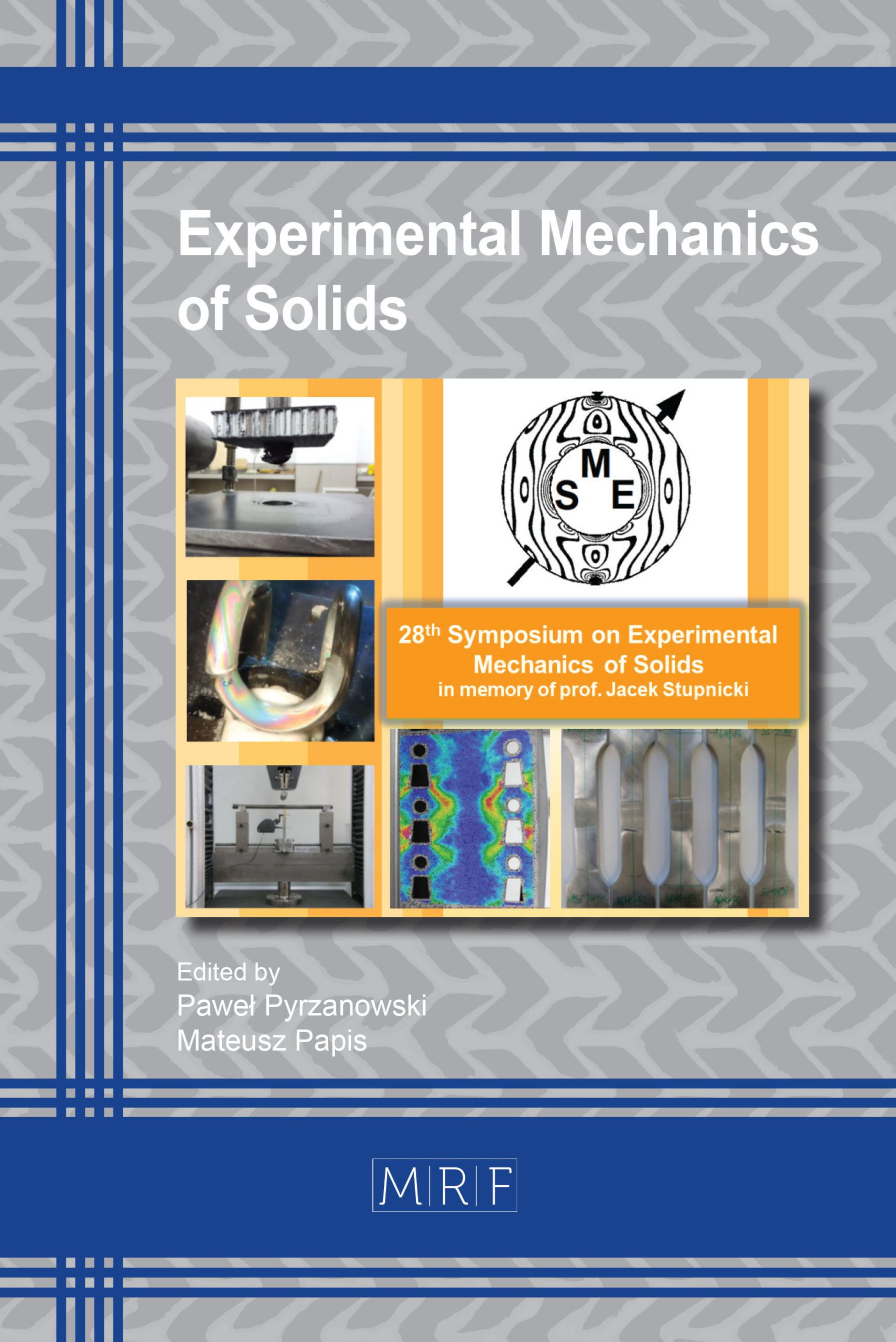Strain Research of Floating Bridge Side Joints in Lab Loading Tests
Wiesław Krasoń, Paweł Bogusz
download PDFAbstract. The separated main connector of a prototype cassettes floating bridge, composed of a mandrel and an outer sleeve, is the subject of the experimental research presented in the work. Operating conditions, similar to those found in side connectors and in the roadway surface of a real joint prototype, are mapped during the lab tests. Determination of strain maps of the prototype joint sleeve walls is the purpose of these tests. Strength tests of the three-point bending of the separated bridge side connector were preceded by a preliminary strength analysis with the use of analytical models and FEM analysis. The range of loads used is selected in such a manner that the maximum stress occurring in the joint sleeve walls should not exceed the yield strength of the material. The electroresistance gauge method is supplemented with the optical image correlation methods for deformation measurements. With a continuous strain distribution maps are developed in this manner. The strain maps enabled a precise identification of the most stressed areas in the joint sleeve wall during the bending tests, as well as a strength assessment of the structural solution of the blind screw fixing mandrel in the connector sleeve.
Keywords
Floating Bridge, 3-Point Bending Test, Digital Image Correlation Method, Experimental Mechanics
Published online 5/25/2019, 8 pages
Copyright © 2019 by the author(s)
Published under license by Materials Research Forum LLC., Millersville PA, USA
Citation: Wiesław Krasoń, Paweł Bogusz, Strain Research of Floating Bridge Side Joints in Lab Loading Tests, Materials Research Proceedings, Vol. 12, pp 96-103, 2019
DOI: https://doi.org/10.21741/9781644900215-14
The article was published as article 14 of the book Experimental Mechanics of Solids
![]() Content from this work may be used under the terms of the Creative Commons Attribution 3.0 licence. Any further distribution of this work must maintain attribution to the author(s) and the title of the work, journal citation and DOI.
Content from this work may be used under the terms of the Creative Commons Attribution 3.0 licence. Any further distribution of this work must maintain attribution to the author(s) and the title of the work, journal citation and DOI.
References
[1] W. Krasoń, Koncepcja, rozwiązania konstrukcyjne i badania systemu pływającego
o regulowanej wyporności, rozdział w monografii. Inżynieria wojskowa – problemy
i perspektywy, Wojskowy Instytut Techniki Inżynieryjnej im. profesora Józefa Kosackiego, Wrocław 2018, ISBN978-83-948983-0-4, pp. 123-146.
[2] W. Krason, J. Malachowski, Field test and numerical studies of the scissors-AVLB type bridge, Bulletin of The Polish Academy of Sciences, Technical Sciences, Vol. 62, No. 1, 2014, pp. 103-112. https://doi.org/10.2478/bpasts-2014-0012
[3] W. Krason, L. Filiks, Numerical tests of the main pin joint in scissor BLG bridge, CMM-2011 – Computer Methods in Mechanics, 9–12 May 2011, Warsaw.
[4] Derewońko, W. Krasoń, Mobile pontoon bridge and floating systems, Konferencja Antwerpia, maj 2018, Special Interest Group A2 (Ports and Maritime) of the World Conference on Transport Research Society (WCTRS), conference proceedings, 3-4 May 2018, Antwerpia.
[5] European Patent, No. 2251255, A sectional pontoon bridge, Military University of Technology, 2013.
[6] Patent Office of the RP, PAT.223689, Set of mechanical locks to connect the floating bridge cassettes and the cassette opening mechanism, Military University of Technology, 2016.
[7] W. Krason, P. Slawek, Design and pre-testing of a mobile modular floating platform with adjustable displacement, Mechanik nr 11, 2017, pp.1075-1080. https://doi.org/10.17814/mechanik.2017.11.185
[8] W. Barnat, W. Krasoń, P. Bogusz, M. Stankiewicz, Experimental and numerical tests of separated side lock of intermodal wagon, Journal of KONES Powertrain and Transport, Institute of Aviation, vol. 21, no 1, pp.15-22. https://doi.org/10.5604/12314005.1134049































